Claims swirl around 'tomb of Jesus'
Archaeologists and scholars challenge the evidence from a TV documentary that would challenge Christianity's foundations.
| Staff writer of The Christian Science Monitor
http://www.csmonitor.com/2007/0301/p13s02-lire.htmThe makers of a new TV documentary claim to have uncovered the biggest archaeological story of the century – the tomb of Jesus and Mary Magdalene. But several archaeologists and biblical scholars challenge the evidence. One calls it "much ado about nothing much."
In resurrecting the theme of "The Da Vinci Code," the Discovery Channel film plays into the public fascination and controversy over Jesus and legends surrounding his life. The producers fed that fascination at a New York news conference this week by unveiling two limestone ossuaries on loan from the Israel Antiquities Authority said to contain residue from the pair's remains,
"The Lost Tomb of Jesus" will air Sunday, March 4, on the Discovery Channel. It is the work of Oscar- winning filmmaker James Cameron ("Titanic") and fellow Canadian Simcha Jacobovici, an Israeli-born film director.
The tomb at the center of the story was actually discovered in 1980 in Jerusalem's Talpiot neighborhood. (The BBC covered it in a documentary in 1996.) The filmmakers assert that it is the tomb of Jesus' family. The crypt contained 10 ossuaries, six of them with inscriptions. Four of them reportedly read "Jesus son of Joseph," two names for Mary, and "Judah the son of Jesus."
If the evidence proved convincing, it would represent a challenge to the New Testament and the foundations of Christianity.
Mr. Jacobovici, an Emmy Award- winning investigative reporter, says in an interview that he learned about the ossuaries three years ago from Israeli archaeologist Amos Kloner while working on another story. But Professor Kloner, who excavated the tomb in 1980, dismissed the inscriptions as insignificant, saying the names were all very common during that period. Yet as a journalist, Jacobovici says, he was intrigued.
During a three-year investigation, he enlisted statisticians, experts in ancient texts and records, archaeologists, and DNA specialists.
What really pushed him along, he says, was determining that one of the Marys represented Mary Magdalene (the other, they posit, is the mother of Jesus). It is the only inscription written in Greek, as "Mariamene." Jacobovici says that a Harvard professor, François Bovon, has determined from a 4th- or 5th-century text, the "Acts of Phillip," that Mariamene is the name for Mary Magdalene.
"Mariamene provided the linchpin, so the second Mary fell into place," Jacobovici says.
The other evidence presented? DNA tests, which determined that the residues in the Jesus and Mariamene ossuaries showed that the two individuals were not related by blood, leading him to deduce they were married. Then Jacobovici commissioned a statistical analysis by an expert at the University of Toronto, who calculated the probability of this combination of names appearing on ossuaries in the same crypt at 600 to 1.
"The tomb is a fact, the names are facts, the DNA relationship is a fact, the statistical studies are facts," insists Jacobovici. "There was enough to say it's time to bring this to the attention of the world and let a scientific, academic, theological debate begin."
And begin it has. While film producer James Cameron calls the evidence "compelling," Professor Kloner himself remains unconvinced.
"It makes a great story for TV, but ... it's nonsense," he told the Jerusalem Post this week. "There is no likelihood that Jesus and his relatives had a family tomb. They were a Galilee family with no Jerusalem ties. The Talpiot tomb belonged to a middle-class family from the 1st century CE [Christian Era]."
He also says that the name, "Jesus son of Joseph," has appeared on at least three or four ossuaries. Others insist that neither Jesus' followers nor his family would have thought of Jesus as the son of Joseph and used that inscription.
"The names are coincidental," says Paul Maier, professor of ancient history at Western Michigan University. "The historian Josephus records 21 Yeshuas [Jesus], and those are people famous enough to be included in his histories. And 25 percent of Jewish women at the time had the name Mary."
He also strongly disputes the equating of Mariamene with Mary Magdalene.
Joe Zias, a former senior curator at the Israel Antiquities Authority, suggests in an e-mail that this is among a list of recent dubious discoveries. He sees "too many people ... on the gravy train without so much as any sentiment for scientific truth."
As for the DNA evidence, critics say the idea captures people's attention today, but there is no DNA evidence related to the historical Jesus. "They simply say they've demonstrated that the two people are not related by DNA," says Ben Witherington, a New Testament expert and author of "What Have They Done With Jesus?" "That proves nothing. There are [many] explanations for why you could have two people in the same extended family tomb that are not related by DNA."
The testing was done on residue in the limestone boxes, since the bones they contained were buried in a cemetery after the tomb was excavated, in line with Jewish custom. DNA tests were not conducted on the other ossuaries, such as the one belonging to "Judah, son of Jesus."
Dr. Witherington also challenges the statistical analysis, charging that it involved a more selective sampling than should have been used. "Another problem is that the majority of the statistics are still in the ground – in ossuaries that haven't been dug up yet." he says. "We can't assume the evidence we have is representative of what is still in the ground."
Jacobovici stands by the analysis, and says the expert, Andrey Feuerverger, has submitted it to a statistical journal for peer review. Apparently unfazed – perhaps even pleased – by all the controversy (the bloggers are in full cry already), he concedes that the evidence "isn't 100 percent."
"All I'm saying is that you have here an interesting tomb, a compelling cluster of names, the DNA doesn't undermine the theory. Hey, world, let's look at this."
The critics have a different take. "It's the same hype that attended 'The Da Vinci Code,' which was plainly fiction. Yet this is cast as fact," says Dr. Maier. "The guy is a showman, an Indiana Jones wannabe."

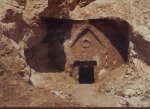
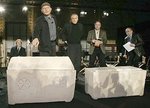






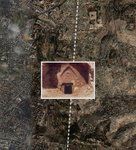


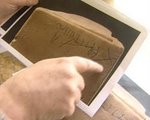






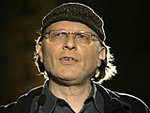

















No comments:
Post a Comment